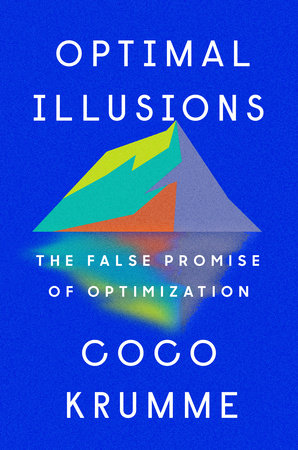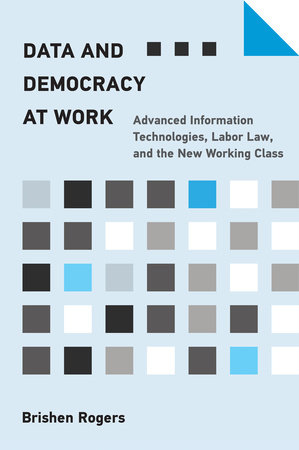Quick Summary
One Sentence Summary
“Conspiracy of Fools” by Kurt Eichenwald is a riveting, true account of the rise and fall of Enron, showcasing the dangerous mix of ambition, greed, and deceit within corporate America.
Big Idea
The core idea of the book is to expose the intricate web of fraudulent practices, financial wizardry, and moral lapses that led to one of the most infamous corporate collapses in history, all while offering a cautionary tale about unchecked corporate power and ethics.
Five Key Ideas
- The Enron Illusion: The book delves into how Enron’s image as a trailblazing company was built on a foundation of deceit and unethical practices.
- Corporate Culture of Deception: It highlights the toxic corporate culture that encouraged risk-taking and manipulation, fostering an environment where illegal activities thrived.
- Financial Smoke and Mirrors: The intricate accounting frauds and loopholes that Enron used to inflate its profits and hide debts are meticulously dissected.
- The Human Element: Personal stories of key figures involved, like CEO Kenneth Lay and CFO Jeffrey Skilling, provide a human dimension to the corporate saga.
- The Fallout: The book also covers the consequences of Enron’s collapse, from personal tragedies to broader financial and regulatory implications.
Actionable Advice
While the book is more narrative than advisory, it implicitly suggests the importance of transparency, ethical practices, and strong regulatory oversight in business.
About the Author
Kurt Eichenwald is an award-winning journalist and author, known for his deep investigative work and his ability to unravel complex financial and corporate scandals.
Read Next
For further reading on similar themes, consider “The Smartest Guys in the Room” by Bethany McLean and Peter Elkind, which also explores the Enron scandal, or “Bad Blood” by John Carreyrou, detailing the rise and fall of Theranos, another case of corporate deceit.
In Depth
The Enron Illusion
Creating a Facade
Enron’s story isn’t just about numbers; it’s about creating an illusion. They were masters of making things appear different from reality. This was the heart of the Enron scandal – a façade of success built on a shaky foundation.
Enron painted a picture of being a revolutionary energy company. They made bold moves, investing in new markets and technologies. The illusion was so convincing that Enron was named “America’s Most Innovative Company” by Fortune magazine for six consecutive years. Behind this veneer, however, was a different story.
The Power of Perception
The company’s leadership knew the power of perception. They pushed employees to maintain the image of a successful, thriving enterprise. In my experience, this kind of pressure can create a toxic environment where the end justifies the means, and Enron was a classic example. Employees felt compelled to meet impossible targets, often resorting to unethical practices.
A Detailed Example
One vivid example from “Conspiracy of Fools” is the story of the Dabhol Power Project in India. Enron, through intense lobbying and questionable tactics, secured this massive power plant deal. The project was fraught with issues from the beginning – inflated costs, local opposition, and questionable revenue projections. Yet, Enron portrayed it as a lucrative, groundbreaking project. This was a classic case of Enron’s modus operandi – hyping up projects to create a false sense of profitability and success.
Eichenwald writes,
“In the Enron model, the appearance of success was more important than success itself.”
This quote encapsulates the Enron illusion perfectly. It wasn’t about actual success; it was about looking successful, no matter the cost.
The Cost of Illusion
In my career, I’ve seen how maintaining an illusion can be exhausting and ultimately destructive. Enron’s case was no different. As the façade began to crumble, the desperate measures to uphold it became more drastic. This wasn’t sustainable, and eventually, the truth caught up. The cost of this illusion was not just financial; it eroded trust and integrity, elements crucial in any business.
Reflections
Reflecting on the Enron Illusion, it’s clear that while appearances can be powerful, they are no substitute for substance. Enron’s story is a reminder of the importance of transparency, ethical practices, and the dangers of sacrificing these for the sake of appearances. In the end, reality always finds a way to reveal itself.
Corporate Culture of Deception
The Toxic Environment
Enron wasn’t just about bad decisions. It was about a culture that bred deception. This wasn’t a few bad apples; it was a rotten barrel. The company culture pushed employees to cut corners, hide truths, and do whatever it took to keep up appearances.
Pressure to Perform
The pressure was relentless. Employees were expected to perform miracles, meet sky-high targets, and keep pushing the company’s stock price up. In this high-pressure cooker, ethical lines blurred. When winning is everything, losing becomes unthinkable. That’s a dangerous mindset.
A Detailed Example
“Conspiracy of Fools” dives into many instances of this toxic culture. One striking example is the case of the Raptors, a series of entities created to hide Enron’s losses. These entities, with names like Talon and LJM, were supposed to be independent. But in reality, they were deeply entangled with Enron, serving as a smokescreen for financial losses and bad investments.
In the book, Eichenwald states,
“The Raptors were to Enron what a pea is to a shell game: the trick that fools the eye.”
This quote perfectly illustrates the deception. These entities were part of an elaborate charade, a financial sleight of hand designed to deceive investors and regulators.
The Consequences of Deception
In such an environment, honesty becomes a liability. Employees who raised concerns were often sidelined or ignored. The company’s focus was on short-term gains, even if it meant jeopardizing long-term stability. This culture of deception was like a ticking time bomb.
Reflections
From my experience, a company’s culture is its lifeblood. It influences decisions, shapes behaviors, and ultimately determines success or failure. Enron’s culture of deception was a recipe for disaster. It created an environment where unethical behavior was not just tolerated but encouraged. The lesson is clear: a culture that values integrity and transparency is not just morally right; it’s also good business.
Financial Smoke and Mirrors
The Accounting Maze
Enron’s downfall wasn’t just about a toxic culture. It was also about how they manipulated numbers. They turned accounting into an art form, where reality was twisted and obscured. Their financial statements were a maze, designed to mislead and confuse.
Creative Accounting
Enron’s accounting wasn’t just creative; it was deceptive. They used complex financial instruments and partnerships to hide debts and inflate profits. This wasn’t just bending the rules; it was rewriting them.
A Detailed Example
One striking example in “Conspiracy of Fools” is the use of mark-to-market accounting. This method allowed Enron to record potential future profits immediately, even if those profits might never materialize. This technique inflated their financial health, presenting a rosy picture to investors and analysts.
Eichenwald writes,
“Enron’s use of mark-to-market accounting was like adding the anticipated future profits from a lemonade stand into today’s income.”
This quote paints a clear picture of the absurdity of Enron’s practices. They were counting chickens before they hatched, building castles in the air.
The Mirage of Success
This financial wizardry created a mirage of success. On paper, Enron looked like a powerhouse, churning out profits and growth. But it was a house built on sand. The moment the tide turned, it was bound to collapse.
Reflections
In my view, transparency in financial reporting is non-negotiable. Enron’s story is a stark reminder of the dangers of financial manipulation. It’s a lesson that profit on paper means nothing if it doesn’t reflect reality. Genuine success comes from real value, not accounting tricks.
The Human Element
Characters Behind the Collapse
Enron’s story isn’t just about numbers or strategies. It’s about people. Real individuals, with ambitions and flaws, played pivotal roles in this saga. Understanding their motivations is key to understanding Enron’s downfall.
The Architects of Deception
Two main characters stand out: CEO Kenneth Lay and CFO Jeffrey Skilling. Both were visionaries in their own right, but their ambition was laced with arrogance and a disregard for ethical boundaries.
A Detailed Example
A profound example from “Conspiracy of Fools” is Skilling’s implementation of the performance review committee (PRC), known internally as the “rank and yank” system. Employees were ranked, and those at the bottom were often fired. This system fueled a cutthroat environment, where short-term gains were prized over long-term stability.
Eichenwald writes,
“In Skilling’s world, you were either a ‘Weenie’ or a ‘Star.’ There was no middle ground.”
This quote captures the binary worldview that Skilled imposed. It was a world that rewarded risk and punished caution, encouraging employees to take whatever means necessary to be a ‘Star’.
The Human Cost
Beyond the executives, there were countless employees, investors, and stakeholders whose lives were upended by the collapse. The human cost of Enron’s downfall was immense, with people losing their jobs, savings, and trust in the system.
Reflections
Reflecting on these characters, it’s evident that leadership sets the tone for a company. Lay and Skilling’s drive for success, at any cost, permeated through Enron. It’s a reminder that in business, ethical leadership is just as important as financial acumen. The human element can’t be overlooked; it’s at the heart of every corporate story.
The Fallout
The Domino Effect
Enron’s collapse wasn’t just a corporate failure. It was an earthquake that shook the entire financial world. Its impact went far beyond its employees and shareholders; it altered the financial landscape.
Ripples Across the Globe
Enron’s downfall had far-reaching consequences. It eroded trust in the market, led to thousands losing their jobs and life savings, and prompted a reevaluation of corporate governance and accounting practices.
A Detailed Example
A particularly poignant example from “Conspiracy of Fools” is the aftermath of Enron’s collapse for its employees. Thousands of workers lost their jobs overnight. Many also saw their retirement savings, tied up in Enron stock, evaporate. Lives were turned upside down, with little warning or recourse.
Eichenwald reflects,
“The human toll was enormous. For many employees, Enron wasn’t just a job; it was their future, now irretrievably lost.”
This quote encapsulates the personal tragedies behind the corporate scandal. It wasn’t just about numbers on a balance sheet; it was about real human suffering.
Regulatory Repercussions
In response to Enron, regulatory reforms were introduced, including the Sarbanes-Oxley Act. This aimed to prevent such scandals by enhancing corporate accountability and transparency.
Reflections
The fallout from Enron’s collapse serves as a stark reminder of the responsibility corporations hold. They are not isolated entities; their actions ripple through communities and economies. The Enron scandal underscored the need for robust regulatory frameworks to safeguard against corporate malfeasance. It’s a lesson in the interconnectedness of business and society.
More
Actionable Advice
-
Embrace Transparency: Always be honest in your dealings. Whether it’s financial reporting or day-to-day operations, transparency is key.
-
Foster Ethical Culture: Lead by example. Create a workplace where integrity is valued and unethical behavior is not tolerated.
-
Avoid Short-Term Temptations: Don’t sacrifice long-term stability for short-term gains. Quick wins might look good on paper, but they can be damaging in the long run.
-
Listen to Whistleblowers: Encourage open communication. When someone raises concerns, take them seriously. They could be highlighting crucial issues.
-
Understand the Big Picture: Remember that your actions affect more than just the bottom line. Consider the broader impact on employees, investors, and the community.
-
Stay Grounded: Ambition is good, but it should be grounded in reality. Don’t let success lead to overconfidence or recklessness.
-
Adopt Responsible Leadership: Lead with ethics and responsibility. Your decisions and behavior set the tone for the entire organization.
-
Regularly Review Practices: Continuously evaluate and improve your business practices. Ensure they align with ethical standards and regulatory requirements.
About the Author
Kurt Eichenwald, born on June 28, 1961, in New York City, is a renowned journalist and author. He gained prominence working for The New York Times, where his focus was on complex business and financial issues, including corporate malfeasance. Eichenwald’s investigative prowess has earned him several awards, including the prestigious George Polk Award. His expertise in uncovering corporate scandals is evident in his books, such as “The Informant” and “Conspiracy of Fools,” the latter delving into the infamous Enron scandal. Eichenwald’s commitment to truth and justice is a core belief that permeates his work. He often tackles challenging subjects, shedding light on corporate and political wrongdoing. This pursuit stems from his deep-seated conviction in holding power accountable. His writing style, marked by meticulous research and an engaging narrative, makes complex subjects accessible to a broad audience. Eichenwald’s belief in ethical journalism and the power of storytelling to effect change is evident in his works, which not only inform but also educate readers on significant issues affecting society.
Read These Next
You might like these similar books
- “The Smartest Guys in the Room” by Bethany McLean and Peter Elkind
- “Too Big to Fail” by Andrew Ross Sorkin
- “When Genius Failed” by Roger Lowenstein
- “Den of Thieves” by James B. Stewart
- “Barbarians at the Gate” by Bryan Burrough and John Helyar
FAQ
Q: What is “Conspiracy of Fools” about?
A: It’s about the rise and fall of Enron, showcasing the deception and malpractices that led to one of the biggest corporate scandals.
Q: Who wrote “Conspiracy of Fools”?
A: The book was written by Kurt Eichenwald, a journalist known for his investigative work.
Q: Is “Conspiracy of Fools” based on a true story?
A: Yes, it’s based on the true events surrounding the Enron scandal.
Q: Does the book offer insights into how to prevent corporate fraud?
A: Indirectly, yes. It highlights the consequences of unethical practices and the importance of transparency and accountability.
Q: Who would benefit from reading this book?
A: Business professionals, students, and anyone interested in corporate ethics, finance, or the Enron scandal would find it insightful.
Q: Is “Conspiracy of Fools” a difficult read?
A: The book is detailed but written in a way that’s accessible to a general audience. It provides a clear narrative of complex events.







